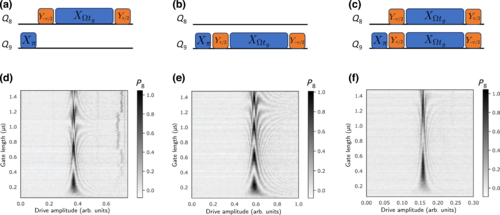A team from IBM Quantum and IBM TJ Watson Research Center has developed and implemented native two-qubit gates in fixed-coupling, fixed-frequency transmons, a significant advancement in quantum computing. The researchers have successfully implemented the B-gate, a perfect entangler from which any two-qubit gate can be reached in only two applications. They have also elucidated the resonance conditions required to drive each two-qubit gate and provided a novel frame-tracking technique to implement them in Qiskit. This research opens up new possibilities for the future of quantum computing, enhancing its efficiency and scalability.
What are Native Two-Qubit Gates in Fixed-Coupling, Fixed-Frequency Transmons?
The research paper by Ken Xuan Wei, Isaac Lauer, Emily Pritchett, William Shanks, David C McKay, and Ali JavadiAbhari from IBM Quantum, IBM TJ Watson Research Center, Yorktown Heights, New York, USA, focuses on the development and implementation of native two-qubit gates in fixed-coupling, fixed-frequency transmons. The paper was received on 2 December 2023, revised on 19 April 2024, accepted on 25 April 2024, and published on 20 May 2024.
Fixed-frequency superconducting qubits have shown significant success as platforms for stable and scalable quantum computing. Cross-resonance gates have been the primary tool of fixed-coupling, fixed-frequency superconducting processors. These gates leverage the entanglement generated by driving one qubit resonantly with a neighbor’s frequency to achieve high-fidelity universal controlled NOT (CNOT) gates.
The researchers have used on-resonant and off-resonant microwave drives to go beyond cross-resonance, realizing natively interesting two-qubit gates that are not equivalent to CNOT gates. They have implemented and benchmarked native iSWAP, SWAP, iSWAP, and bSWAP gates. In fact, any SU(4) unitary can be achieved using these techniques.
What is the Significance of the B-Gate?
The researchers have also applied these techniques for an efficient construction of the B-gate, a perfect entangler from which any two-qubit gate can be reached in only two applications. They have shown that these native two-qubit gates are better than their counterparts compiled from cross-resonance gates.
The B-gate is a significant development in the field of quantum computing. It is the first experimental demonstration of the B-gate, introduced in Ref 8, from which any two-qubit unitary can be compiled with only two applications. These native two-qubit gates are faster and higher fidelity than their counterparts compiled using controlled ZCZ gates based on the CR interaction. They can be driven in any coupled.
What are the Resonance Conditions for Two-Qubit Gates?
The researchers have elucidated the resonance conditions required to drive each two-qubit gate. They have provided a novel frame-tracking technique to implement them in Qiskit. This is a significant contribution to the field of quantum computing, as it provides a practical method for implementing these advanced quantum gates.
The resonance conditions are crucial for the successful operation of the two-qubit gates. These conditions ensure that the gates operate at their optimal efficiency and fidelity. The researchers have provided a detailed explanation of these conditions, making it easier for other researchers and practitioners to implement these gates.
How Have Fixed-Frequency Transmons Performed in Quantum Simulations?
Fixed-frequency transmons with fixed couplings have performed quantum simulations with great success using cross-resonance (CR) gates. The fidelities of these gates have increased steadily over time. Recently, fixed coupling transmons have demonstrated native ZZ interactions using off-resonant Stark tones.
The question arises, can more interesting two-qubit interactions be realized natively in fixed-coupling transmons? The researchers have shown how to generate native iSWAP, SWAP, bSWAP, and non-Clifford gates such as iSWAP and B-gates using only microwave drives in a fixed-frequency, fixed-coupling transmon processor.
What is the Future of Two-Qubit Gates in Quantum Computing?
The research by the team from IBM Quantum, IBM TJ Watson Research Center, Yorktown Heights, New York, USA, has opened up new possibilities for the future of quantum computing. The development and implementation of native two-qubit gates in fixed-coupling, fixed-frequency transmons have the potential to significantly enhance the efficiency and scalability of quantum computing.
The successful implementation of the B-gate, a perfect entangler from which any two-qubit gate can be reached in only two applications, is a significant milestone in the field of quantum computing. This development could pave the way for more advanced quantum computing applications in the future.
The elucidation of the resonance conditions required to drive each two-qubit gate and the provision of a novel frame-tracking technique to implement them in Qiskit are also significant contributions to the field. These developments could make it easier for other researchers and practitioners to implement these advanced quantum gates, further advancing the field of quantum computing.
Publication details: “Native Two-Qubit Gates in Fixed-Coupling, Fixed-Frequency Transmons Beyond Cross-Resonance Interaction”
Publication Date: 2024-05-20
Authors: Ken Xuan Wei, Isaac Lauer, Emily Pritchett, William Shanks, et al.
Source: PRX quantum
DOI: https://doi.org/10.1103/prxquantum.5.020338

